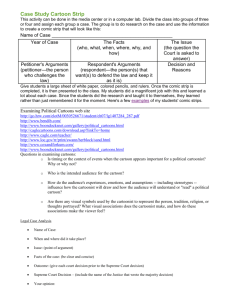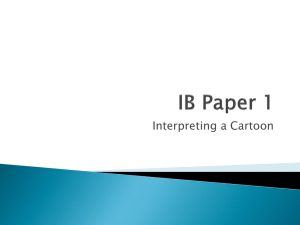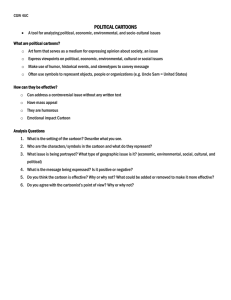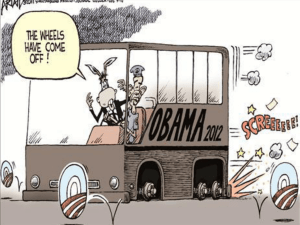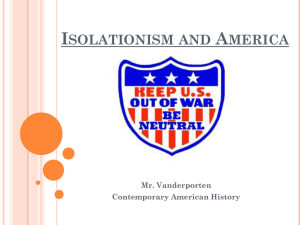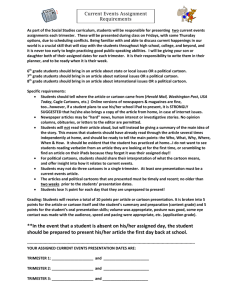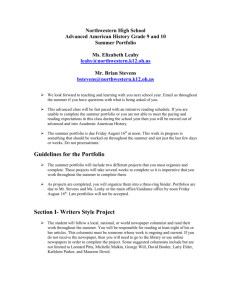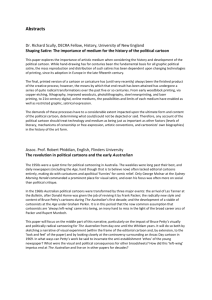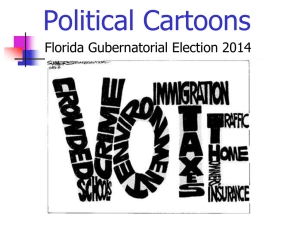Analyzing Political Cartoons
advertisement
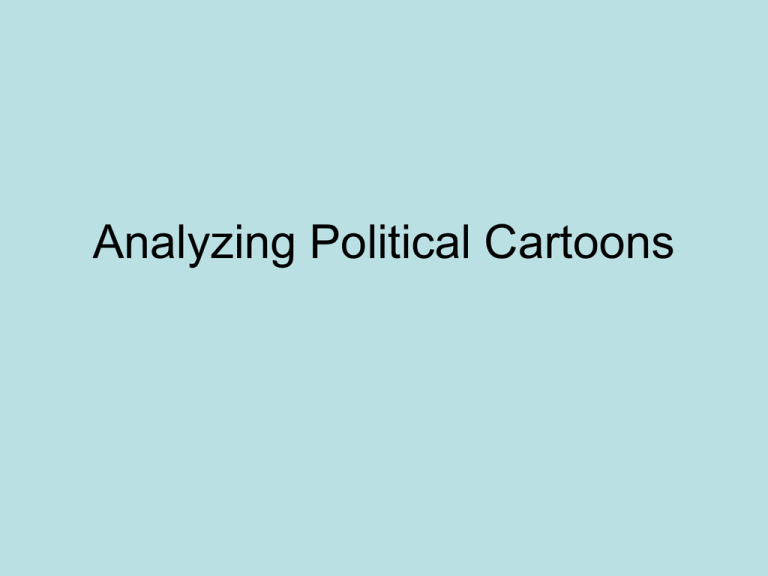
Analyzing Political Cartoons The First Political Cartoons • It's important to note that America's earliest cartoons were political in nature. The first cartoon appeared in Ben Franklin's newspaper The Pennsylvania Gazette on May 9, 1754. It appeared as part of an editorial by Franklin commenting on 'the present disunited state of the British Colonies.' • The woodcut drawing entitled 'Join or Die' pictures a divided snake in eight pieces representing as many colonial governments. The drawing was based on the popular superstition that a snake that had been cut in two would come to life if the pieces were joined before sunset. The drawing immediately caught the public's fancy and was reproduced in other newspapers. • Another early cartoon from the 1700's appeared in the Massachusetts Centinel on January 30, 1788. Entitled 'The Federal Superstructure,' the drawing shows a hand helping to raise the Massachusetts pillar to an upright position. The Centinel newspaper, a supporter of the new Constitution, observed that 'The Pillar of the Great Federal Edifice rises daily.' • Shown in position 'having already ratified the new document' are pillars representing the states of Delaware, Pennsylvania, New Jersey, Georgia and Connecticut. A story below the drawing notes that the New York Assembly will call for a convention to ratify the Constitution. • While the style of America's early political cartoons differs in appearance from those of today, central to all is a subject that is obviously political. And the objects in the cartoon symbolize something other than what is shown. They draw attention to a problem in politics using humor and satire. http://cagle.msnbc.com/politicalcartoons/ Notice the dollar bill is partially under water. What do you think that means? Notice the fish, what type of expression do they have on their faces? What is George Washington’s fate? These are all questions that you need to ask of this political cartoon to try to figure it out. Answer: This cartoon represents the loss of value the American dollar is taking in the world economy. http://cagle.msnbc.com/politicalcartoons/ Some times you have to look at the images in the cartoon as well as the writing to completely understand the cartoonist’s message. • http://nieonline.com/cftc/2007constitution/pages/Barry%20Hunau%20Cheney.htm Read the title of the cartoon at the bottom of the page. Then read all of the plaques posted on the wall around the pictures. Who is Cheney? Maybe you recognize his name in relation to President Bush. Is the cartoonist a supporter of Cheney and the Republicans? Why would Cheney be related to hunting in a way he could be made fun of? Answer: Vice President Dick Cheney accidentally shot a fellow hunter in the woods last year. This cartoonist is probably a critic of the Republicans considering he is taking a negative view of Cheney’s actions. Dr. Seuss Goes To War Famed Cartoonist Dr. Seuss drew political cartoons for the government during World War II to encourage people to buy war bonds. His cartoons also helped instill a dislike for all things Nazi and Japanese to promote the justice of warfare against Germany and Japan. Questions to consider when analyzing a political cartoon. Before you move to the next page examine the cartoon yourself. • What do you see in it? • What do you think cartoonist was trying to say? • What elements of the cartoon confuse you? Use your new skills and try to figure out the following political cartoons.
